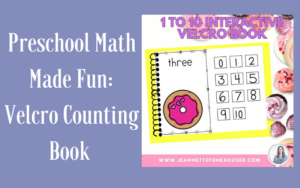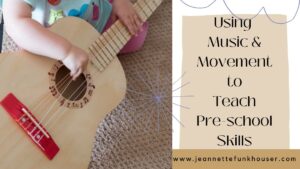In the early years of a child’s life, building a strong and nurturing preschool community is integral to their growth, learning, and friendship development. Preschool is a formative time when children not only acquire basic academic skills but also develop social and emotional competencies that shape their future interactions and relationships.
By creating a supportive environment where children feel a sense of belonging, acceptance, and inclusion, preschools play a pivotal role in fostering their overall development. A strong community in preschool provides opportunities for children to engage in cooperative play, problem-solving, and teamwork, enabling them to develop essential social skills, empathy, and resilience.
Moreover, a supportive community also benefits parents by fostering a sense of trust, collaboration, and shared responsibility. When parents actively participate in the preschool community, they gain valuable insights into their child’s progress, strengthen their bond with the school, and find a network of support among fellow parents.
In this article, we will explore the power of building a strong community in preschool and the numerous benefits it offers to children, parents, and educators. Together, let’s discover how we can create a vibrant and inclusive environment that fosters growth, learning, and friendship.
Building a Strong Preschool Community: Strategies for Growth and Learning
To cultivate a strong community within a preschool setting, it is essential to encourage parent involvement and collaboration. Parents are valuable partners in their child’s education and can contribute significantly to the sense of community within the school. By inviting parents to participate in classroom activities, volunteer for events, or join parent-teacher associations, preschools can create a network of support that benefits both children and families. When parents are actively engaged in the school community, they feel more connected to their child’s learning experiences and build relationships with other families, fostering a sense of belonging and shared responsibility.
Building a strong classroom community is essential for creating a positive learning environment. There are many ways to achieve this, but some effective strategies include ensuring that children feel comfortable, secure, and valued as members of your classroom community. You can do this by focusing on learning the children’s names and by helping them become familiar with you, any co-teachers, the classroom setup, and daily routines.
One way to focus on learning the children’s names and helping them learn their classmates’ names is through songs or chants.
Here are some examples:
Hicklety Picklety Bumblebee
For this name game, sit cross-legged on the floor and pat your knees while you chant in a regular, somewhat emphatic voice. It’s not easy for little ones, so it will be mostly the adult chanting. You want their attention to draw toward you as you get softer so that by the time you are mouthing the name silently, the children are focused on your mouth, and you have their full attention.
Hicklety picklety bumblebee
Who can say their name to me?
Allison! (loudly)
Allison. (whispered)
All-i-son. (mouthed without vocalizing)
Jack in the box
For this name game, the child sits on the floor curled up, hiding his head (the yoga “child’s pose”). When you shout, “Yes, he will!” the child pops up…just like a jack in the box, arms up overhead as if to say, “Ta-da!”
Christopher, in the box, sits soooooo still.
Will he come out?
Yes, he WILL!
Willoughby Wallaby Woo
First, listen to Willoughby Wallaby Woo by Raffi. Then sing this short verse below, substituting in the child’s name. If you have an elephant puppet or little stuffed elephant to literally “walk” over and “sit” on the child, all the more giggle-inducing!
Willoughby wallaby woo
An elephant sat on YOU (point the finger toward a child whose name will be used)
Willoughby Wallaby Wistopher
An elephant sat on Christopher!
Jack Be Nimble
First, practice the nursery rhyme. Then use a block from the block center for the candlestick, substitute the children’s names for “Jack,” and they can jump over the “candlestick” on their way to their next activity.
Classroom Tours
When helping children understand our classroom setup at the beginning of the year, we tackle this by doing classroom tours and discussing an interest area or center area at the morning meeting.
The discussion starts something like this:
Teacher: Each part of our classroom has a name, just like you. Today we will discuss” ” and learn what you can do there.
Teacher: What might we do in …………..?
The following day I would review what the class discussed with the question, “Do you remember the name of the area where we ……..?”
Consistent Sequence of Events
Establishing a predictable sequence of events will help children feel secure and become increasingly independent when building an effective learning environment. When children do not know when things will happen, a classroom can become chaotic.
Think about the different events that occur every day and organize these events as a daily schedule. Be sure to have a good balance of active and quiet times and child-initiated versus teacher-planned activities. I usually start the year out with last year’s pictures. I take photos of the children participating in the events of the daily schedule and use them for our daily schedule. With preschool, the children are usually with us for two years, and I’ve found that they love seeing pictures of their friends who moved on to kindergarten. After a couple of weeks into the school year, I replace a few of the photos with any new students that might have joined our class.
By fostering a sense of belonging and mutual support among students, we can create a classroom community that empowers each individual to reach their full potential.
Incorporating community-building activities and events is another effective strategy for strengthening the preschool community. Organizing events such as family picnics, cultural celebrations, or volunteer projects not only brings families together but also creates opportunities for children to interact outside of the classroom environment. These shared experiences help build bonds among families, teachers, and students, creating a cohesive community that values diversity, inclusivity, and mutual respect. By fostering a sense of unity and collaboration through community events, preschools can create a supportive environment where everyone feels welcomed and valued.
Impact of a Strong Preschool Community
In conclusion, the power of building a strong community in preschool cannot be underestimated. A supportive and nurturing environment is essential for children’s growth, learning, and friendships. Promoting social and emotional skills, enhancing academics, and fostering empathy creates a thriving preschool community. This strong community also benefits parents by providing trust and support. By encouraging parent involvement and organizing community activities, preschools can create an inclusive environment that enriches children, families, and educators. Let’s continue to nurture preschool communities that empower young learners to reach their full potential and build lasting friendships.












